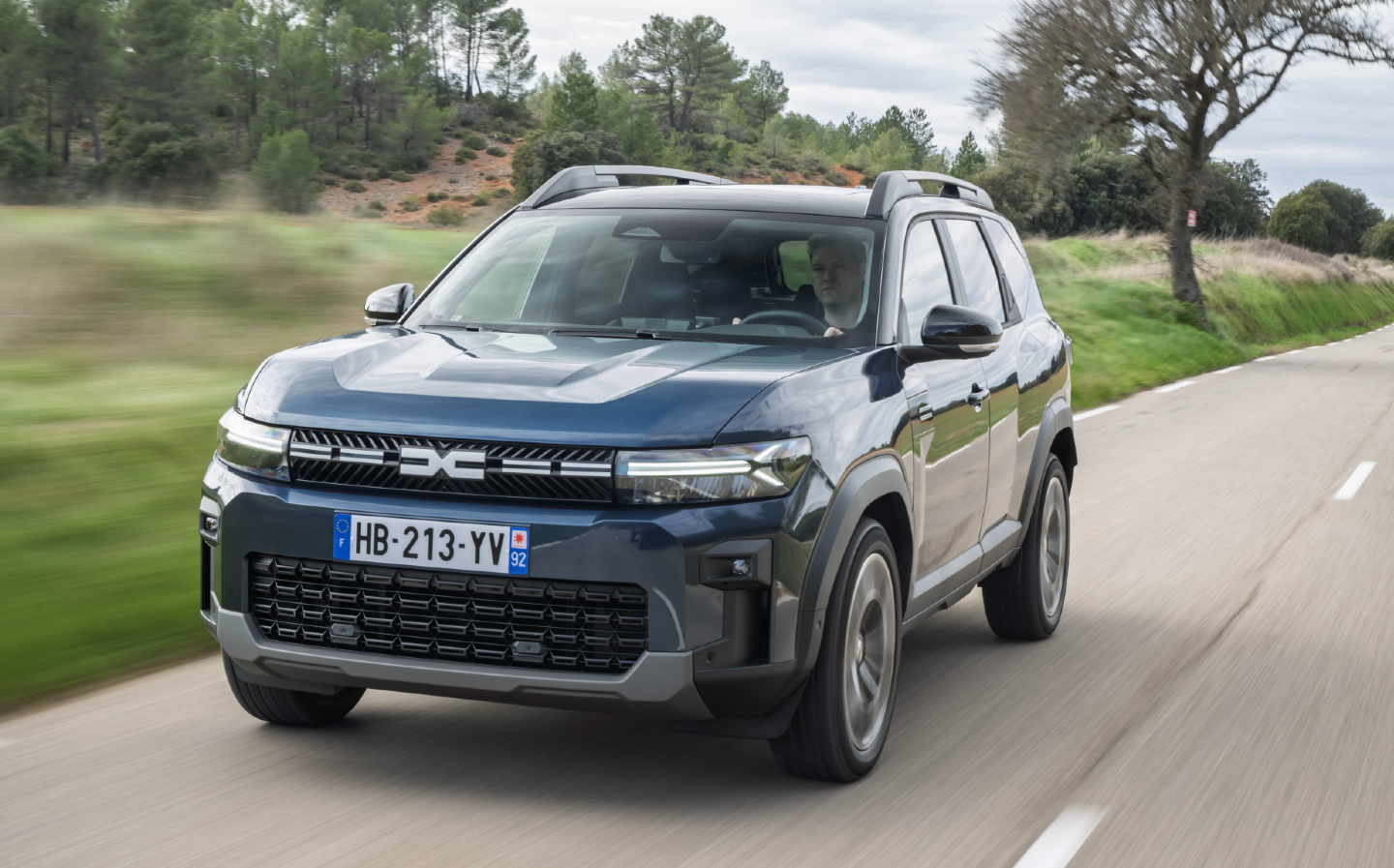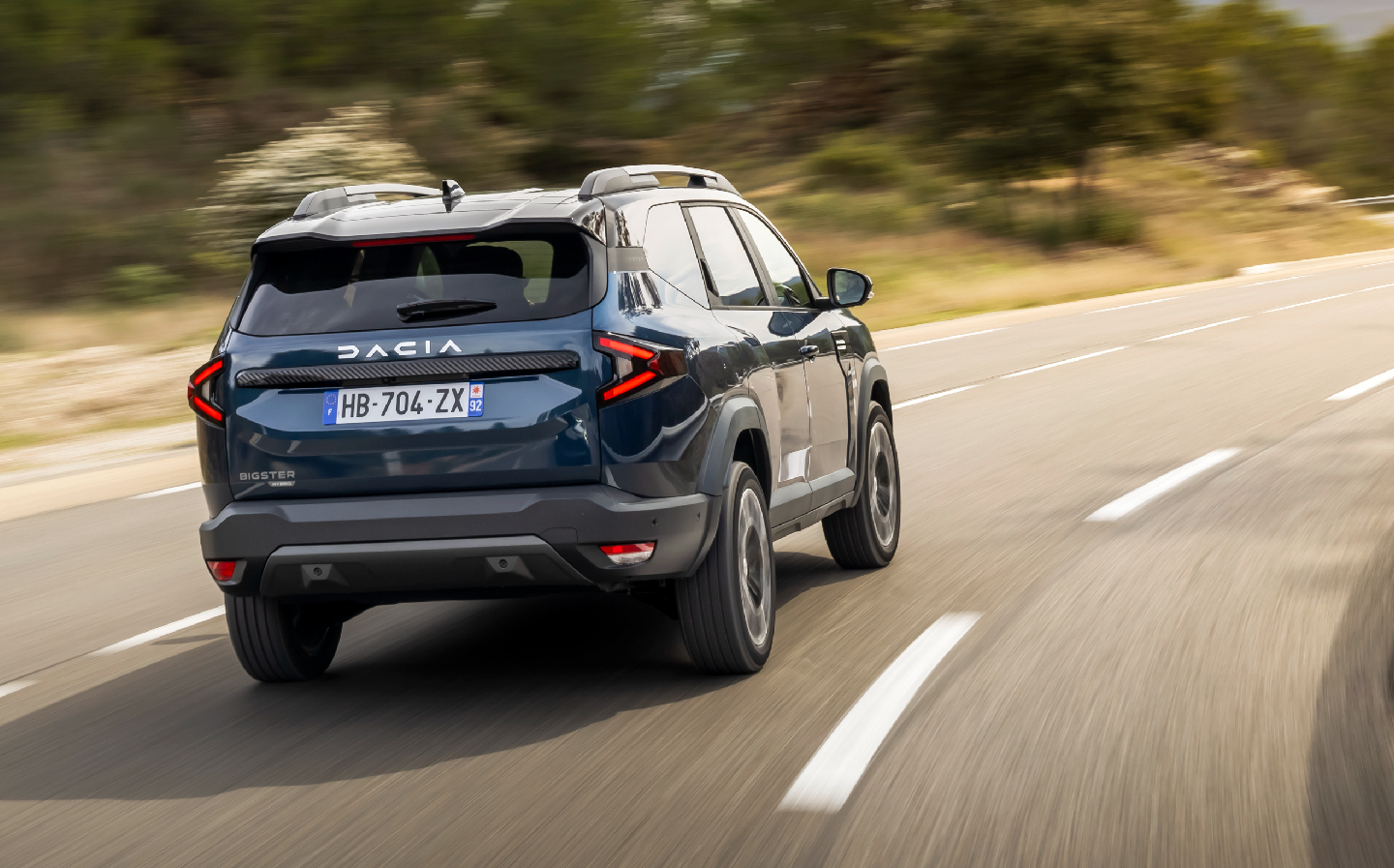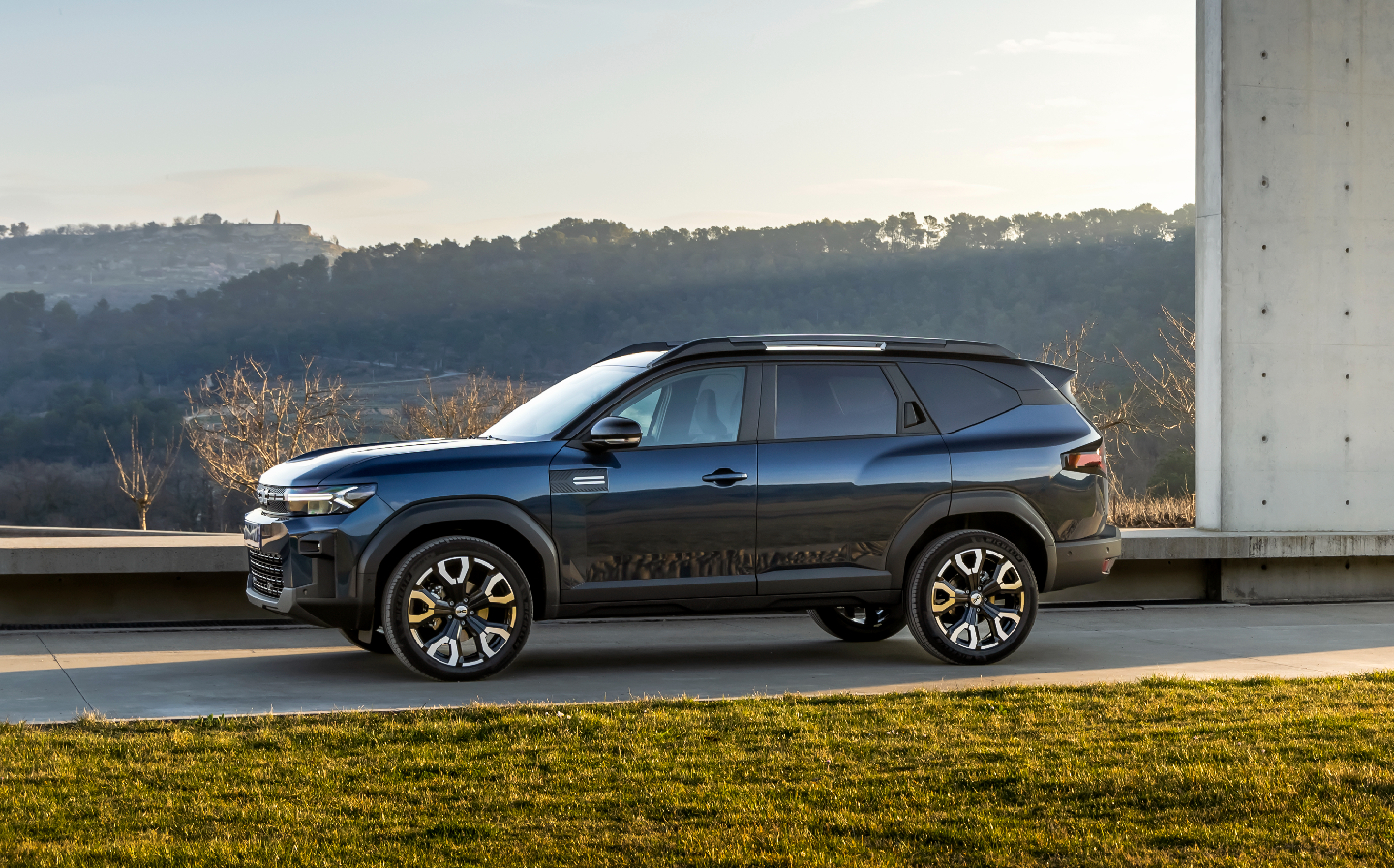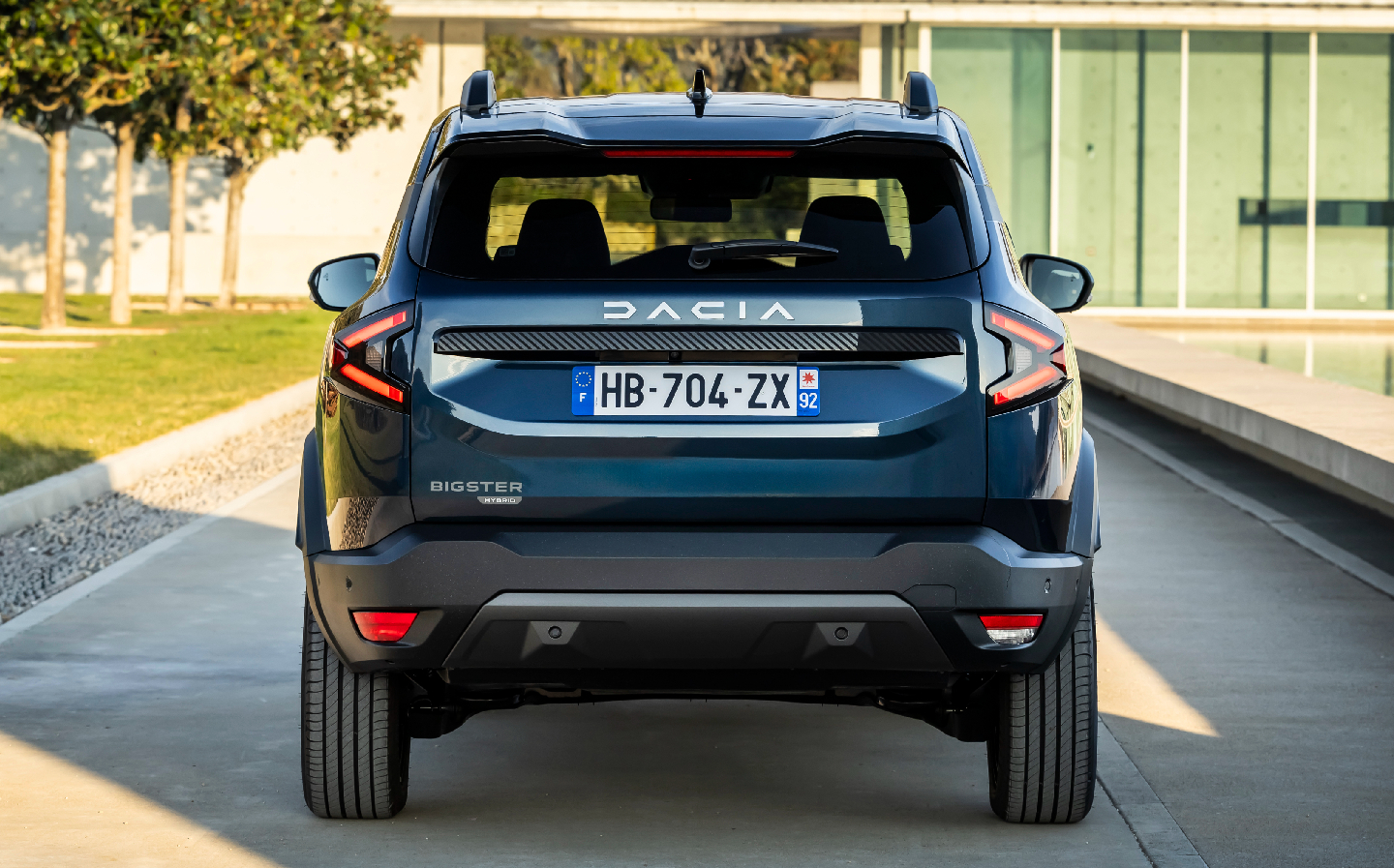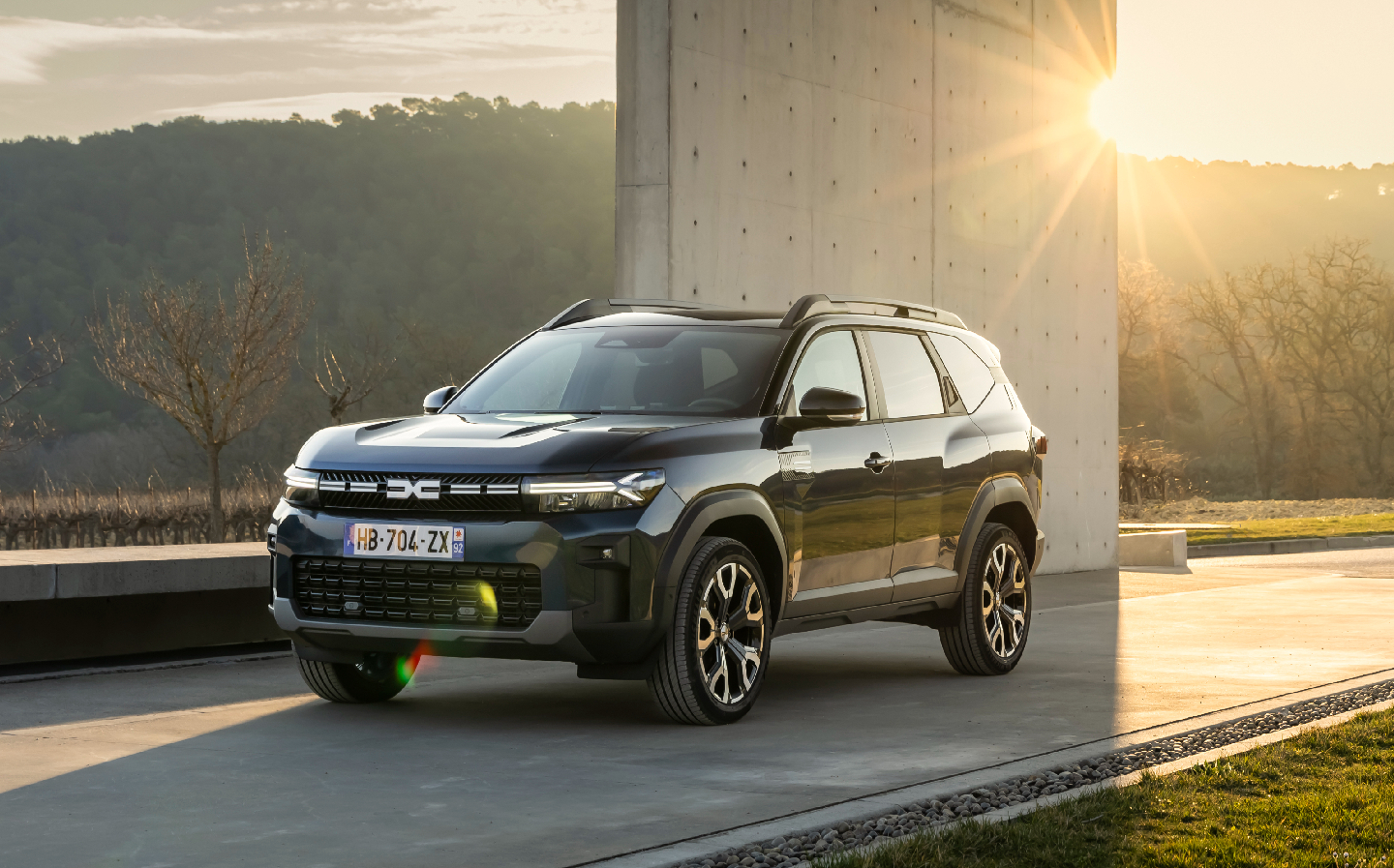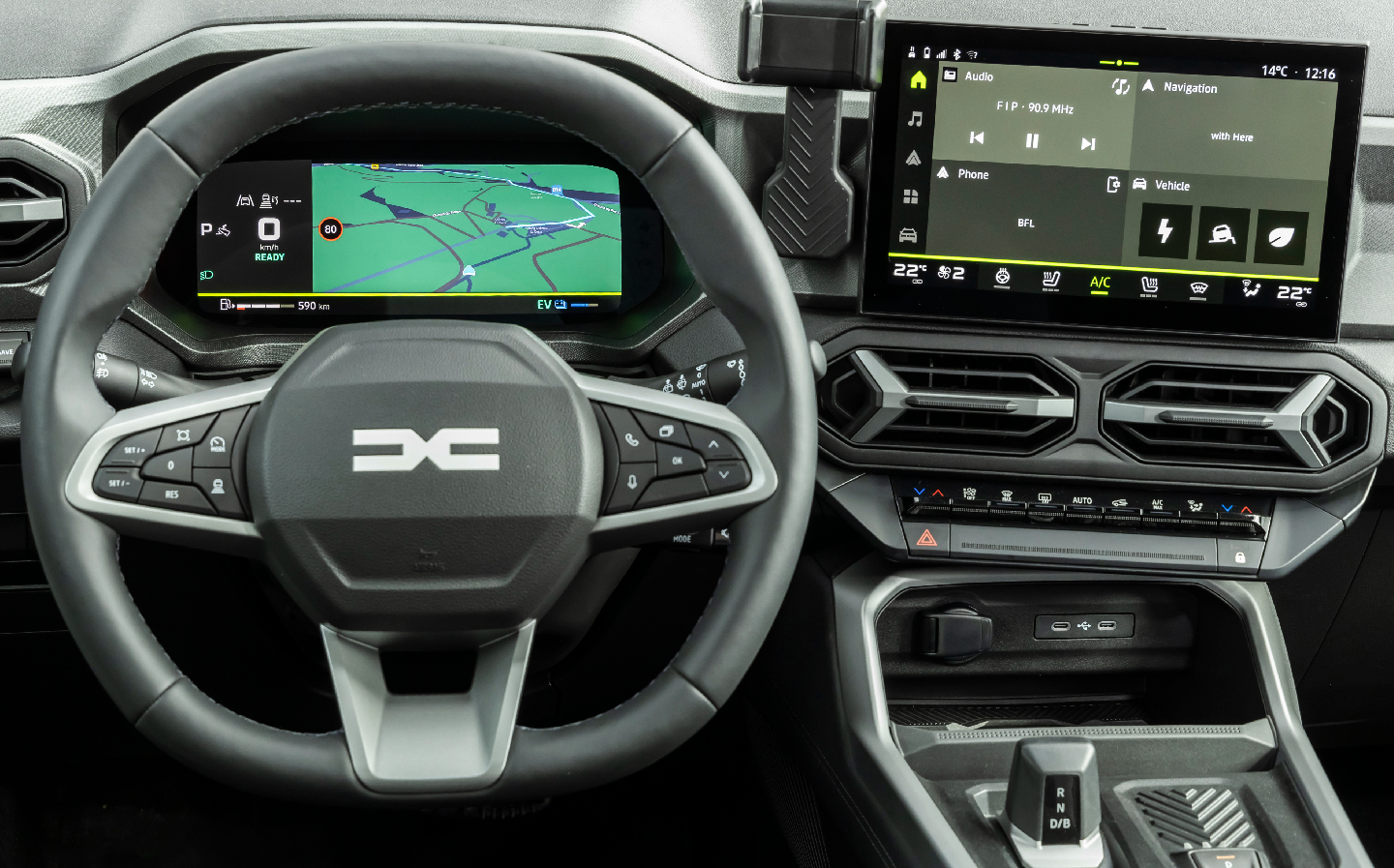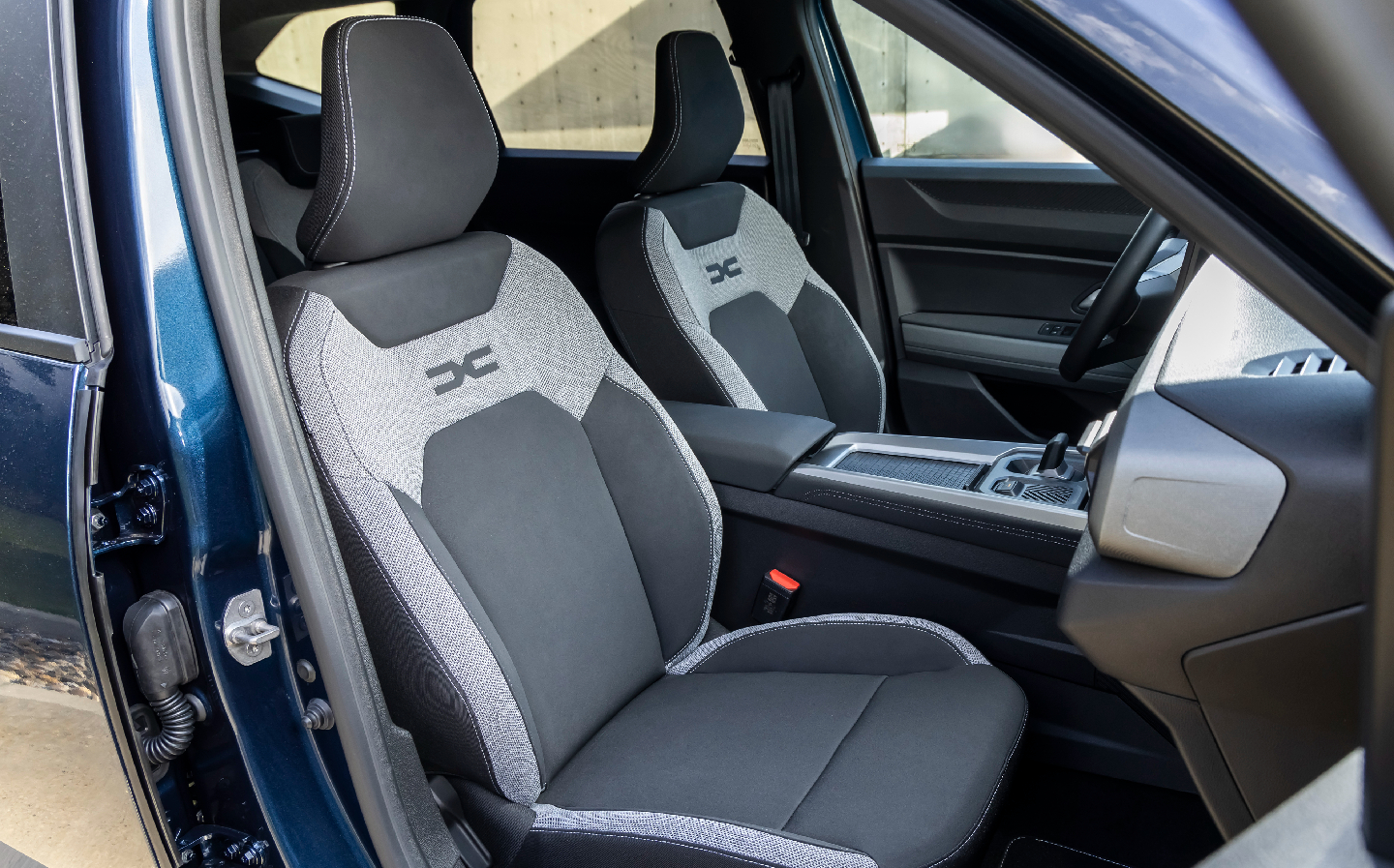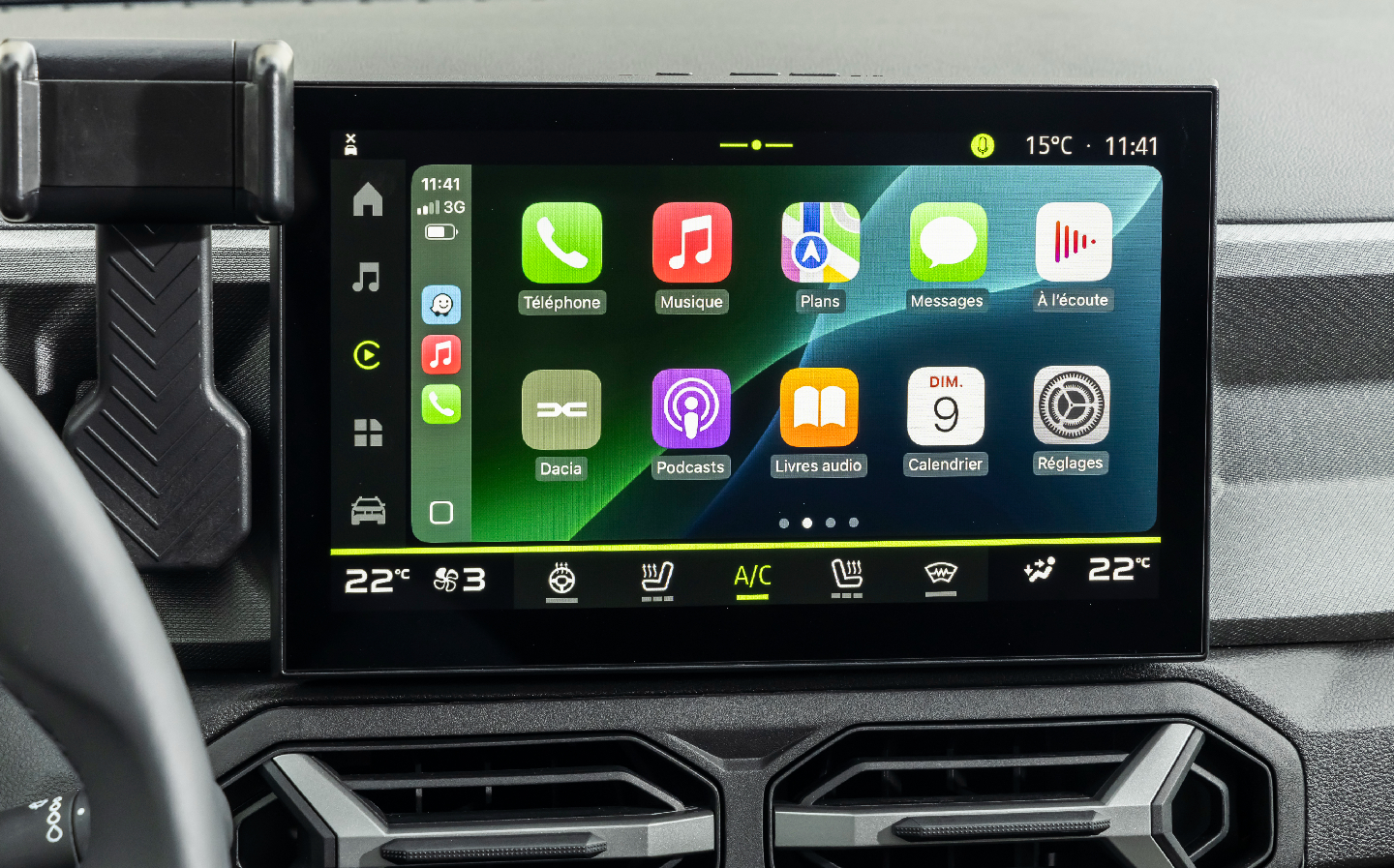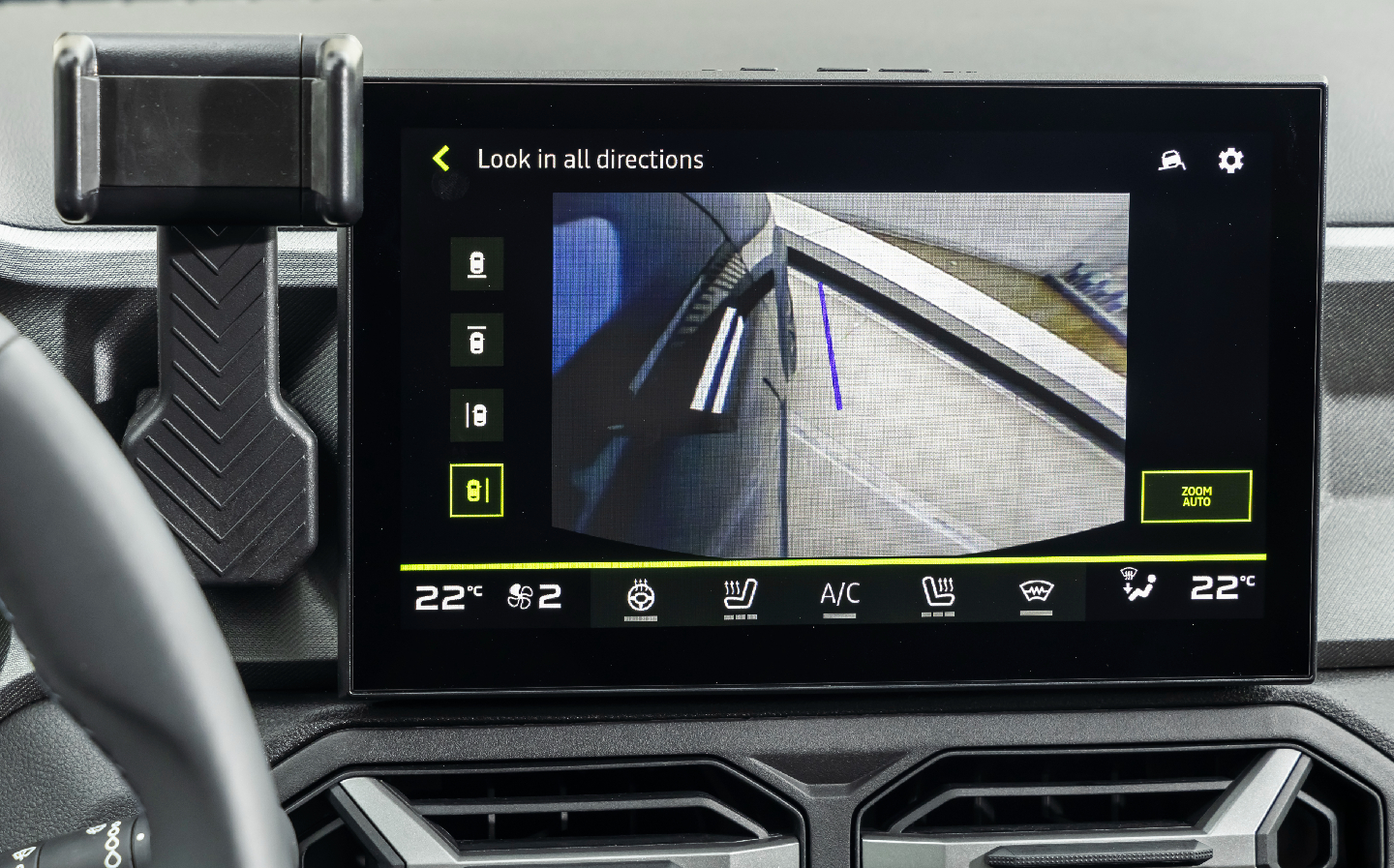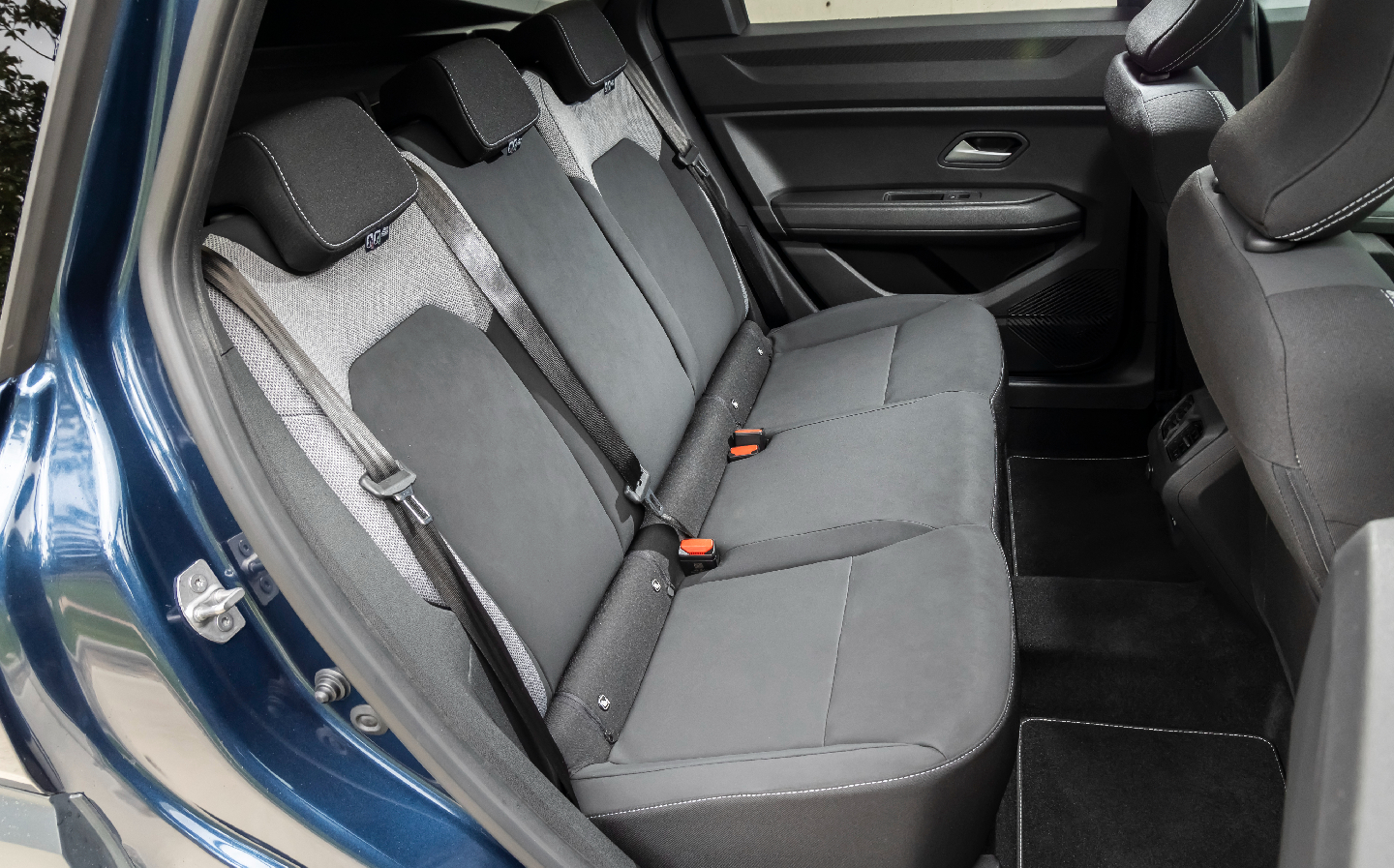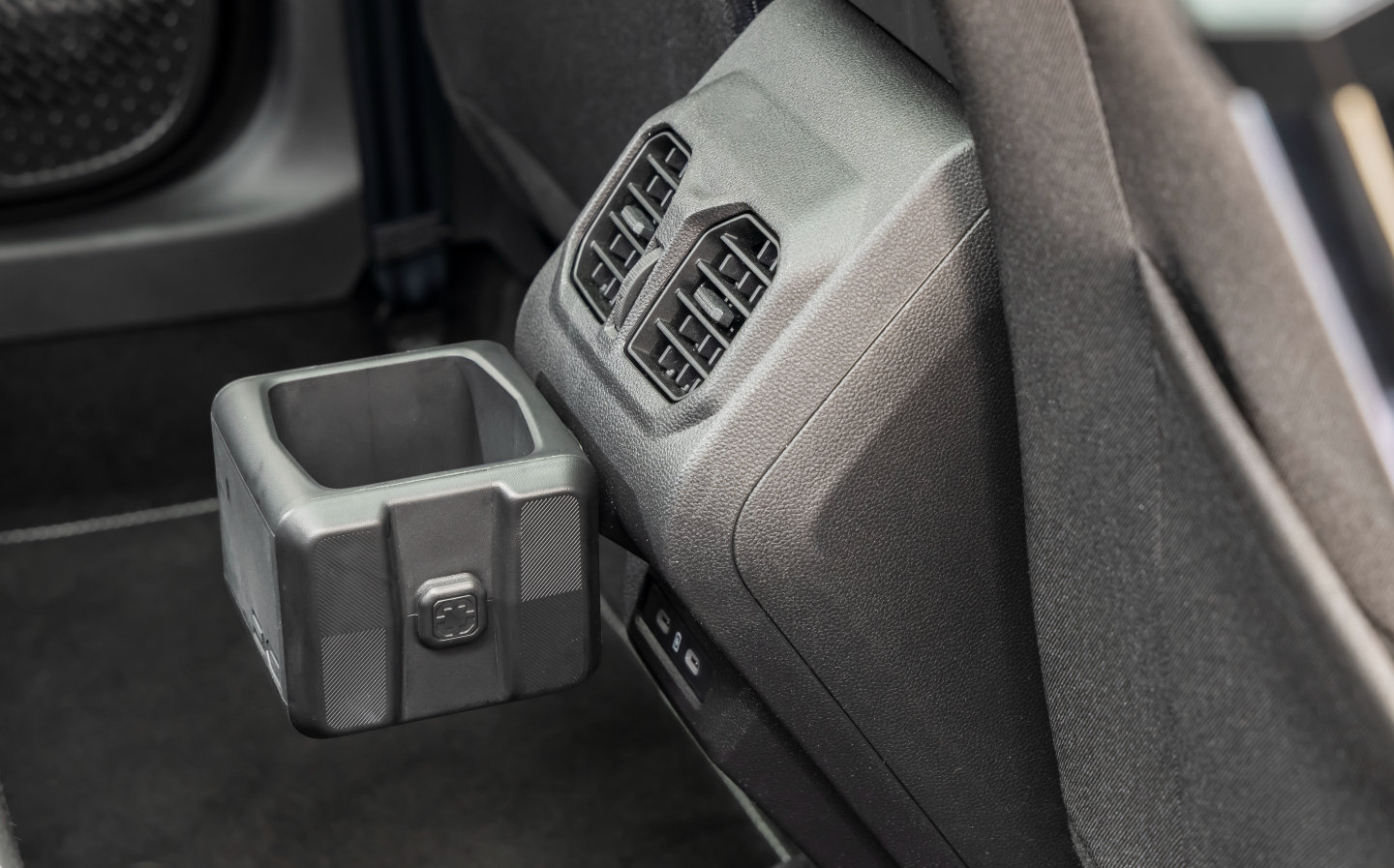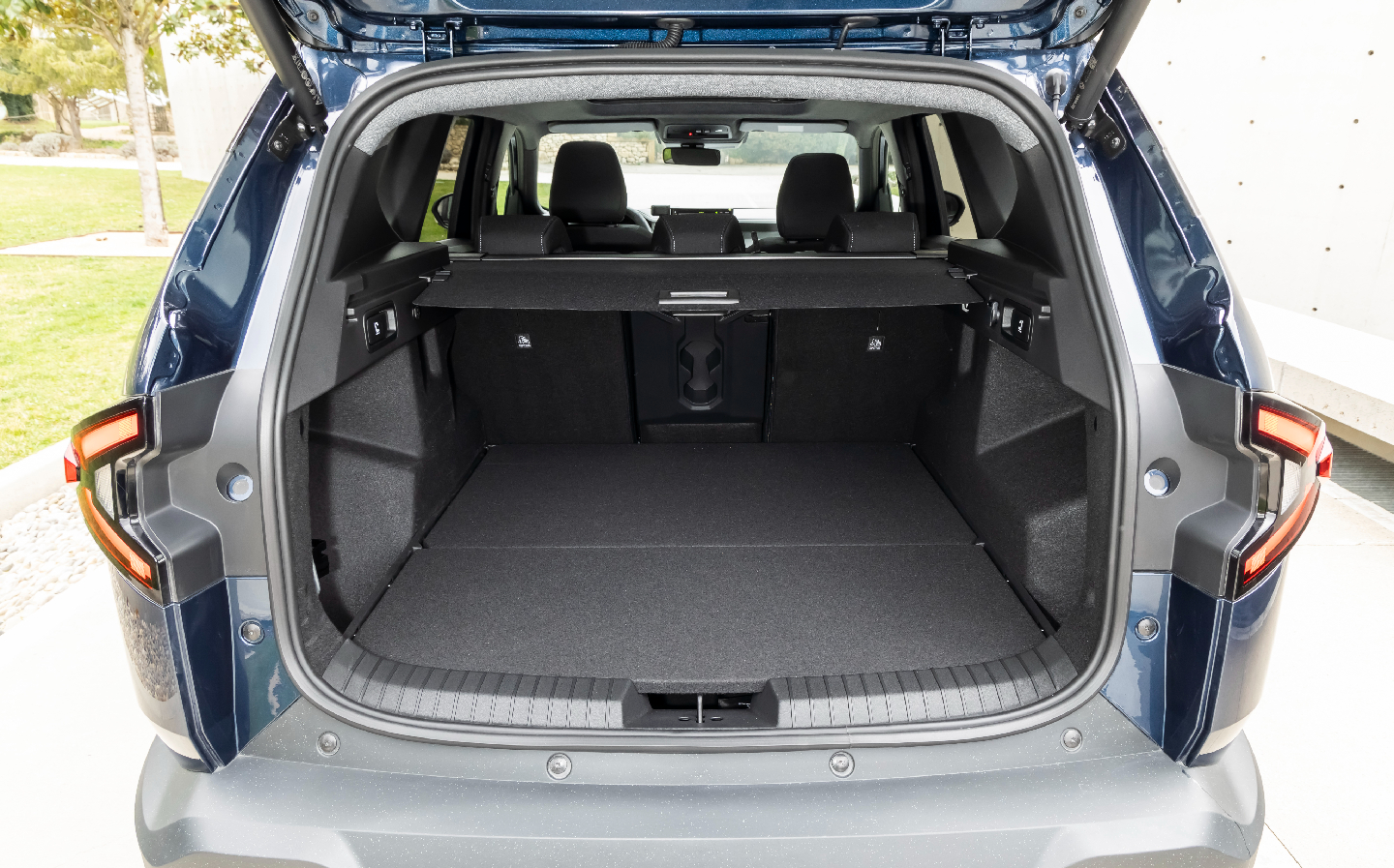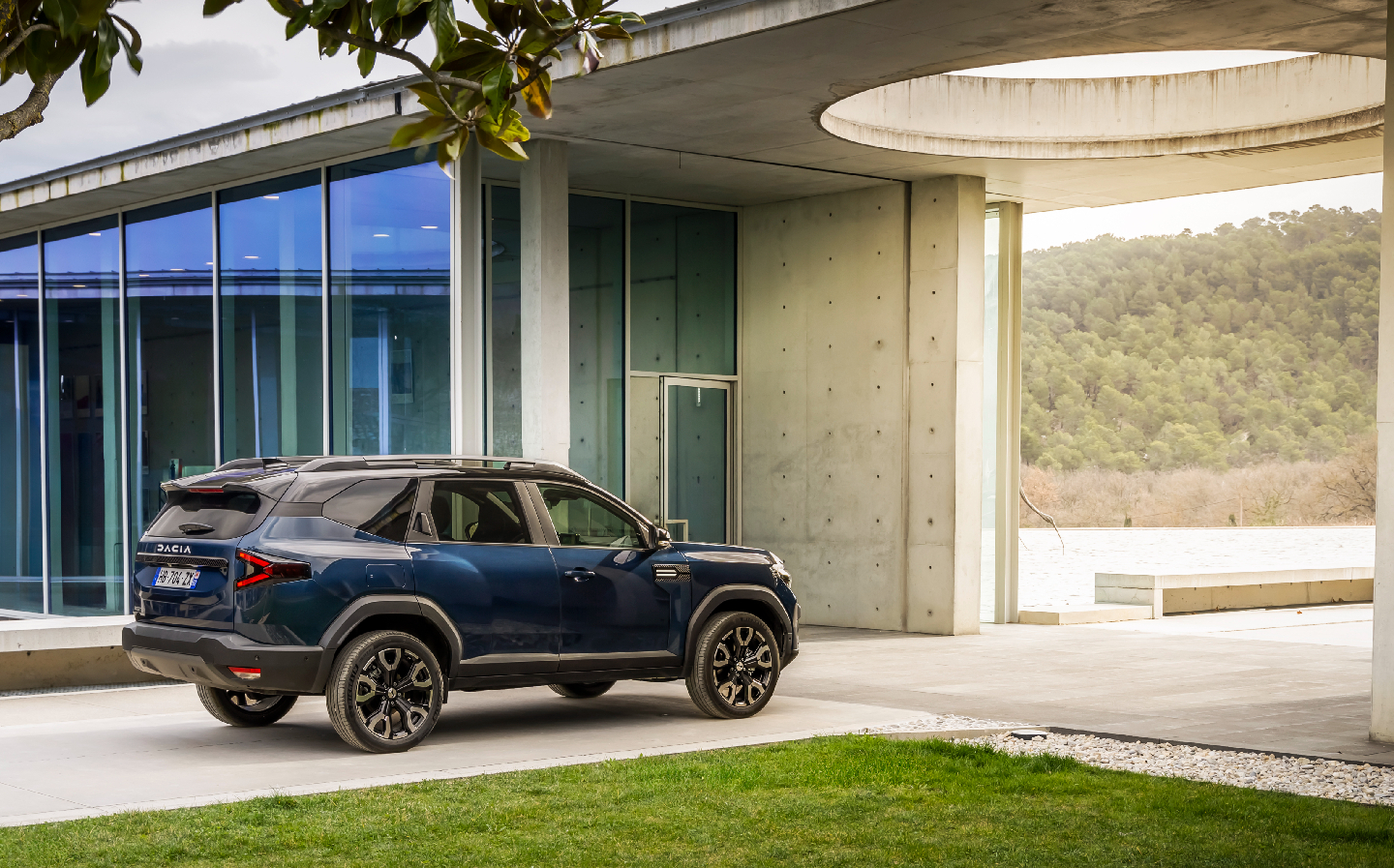Dacia Bigster 2025 review: The 'anti-premium' family SUV that punches above its weight
The new big kahuna in budget SUVs
Ever since Dacia launched in the UK, in 2013, it has absolutely owned the cheap and cheerful corner of the car market. Its advert tagline, “You do the maths,” spoken by Chris Finch in The Office, was fun, cheeky, honest and plain-speaking — all qualities associated with the brand.
And Dacia still prides itself on being affordable and no-nonsense — Dacia’s CEO Denis Le Vot even told me the brand was “anti-premium” — but as with all budget carmakers, even this famously affordable brand needs to add a few frills for UK car buyers. The cheapest versions of Dacias just aren’t sold here any more, because Brits don’t want to let their neighbours know that they’re only just scraping by. No, I’ll have the second cheapest, thank you very much.
And the models we do get are becoming more comfortable and getting fancier technology, as evidenced by the new Duster and the car you see here — Duster’s all-new big brother, appropriately (and rather comically) named Bigster.
The Bigster takes economy motoring to new heights of plushness, in fact, because a survey of 400 customers revealed that if the company were to produce a larger family SUV, there are certain features they simply couldn’t live without: the cabin has to be quiet, so a thicker windscreen has been fitted; the engine needs to be refined and economical, so Bigster gets the first use of a new Renault Group hybrid system; there needs to be electric adjustment for the front seats (though only for height and recline… sliding is still done with an old-fashioned handle); and there has to be dual-zone air conditioning.
“Oh,” they said, “and we’ll probably need an electric tailgate and big sliding sunroof,” so those are options on the Bigster.
All of which means the Bigster is its new, vaguely-plush flagship model. But it’s deliberately not in the realms of “premium”, and still very affordable. In fact, prices start at under £25,000, and even if you want the most powerful engine and the range-topping trim, the Bigster comes in at less than 30 grand — that won’t even get you the entry-level Qashqai these days.
Le Vot reckons he’s being quite canny here. Not in noticing that the mid-sized SUV segment is the largest market out there and he definitely needed to build one (he’d be a crap CEO if he hadn’t spotted that), but that the people who bought one of the three million or so of these “C-SUVs” currently on the roads for around £30k eight years ago will, when they come to replace it, notice the same car now costs about £38k. And because nobody can afford things like food or heating these days, here’s the answer.
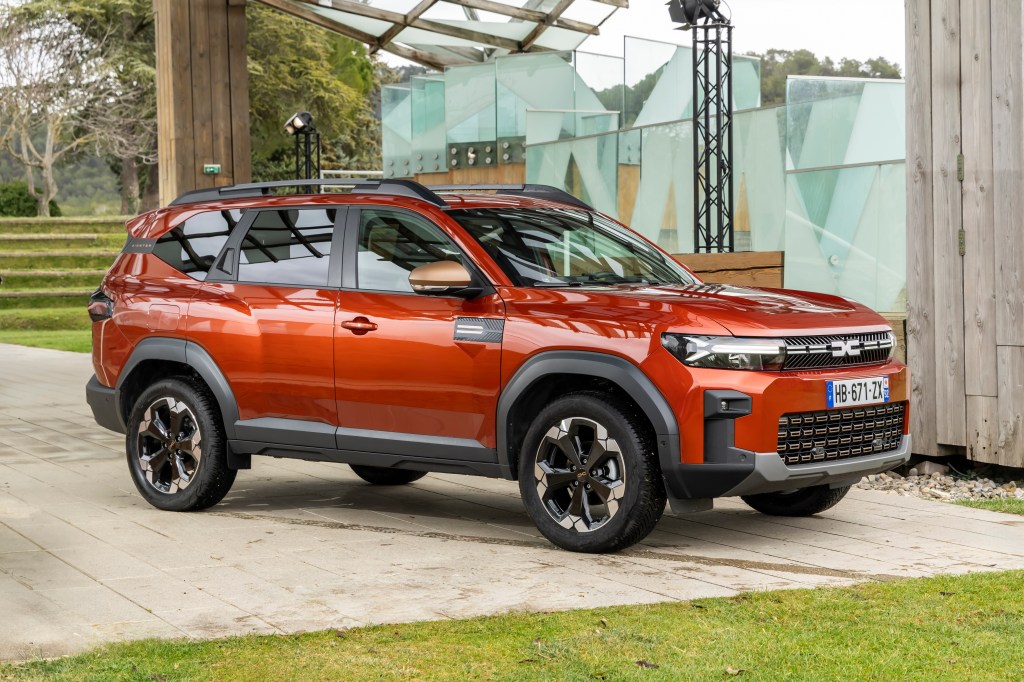
But is the Bigster good value? Well, it’s not what most people would describe as beautiful but it’s also not a car you’d be ashamed to have sitting outside your house. True, it has “generic SUV” vibes, and when a Toyota RAV4 turned off the autoroute in front of us my driving partner (an esteemed motoring journalist from another publication) thought it was a Bigster and told me I’d missed our turn. In fact, that happened twice. In other words, if you want a car that doesn’t resemble a RAV4 or Honda CR-V, look elsewhere.
But it’s not unattractive, in a chunky, utilitarian kind of way, with sharp lines and flared arches. Bumps and scratches can be brushed off thanks to the use of Dacia’s dyed-in-the-mass plastic trim, along with the patented Starkle material, which is made from 20 per cent recycled plastic and is 100 per cent recyclable — good news for the planet.
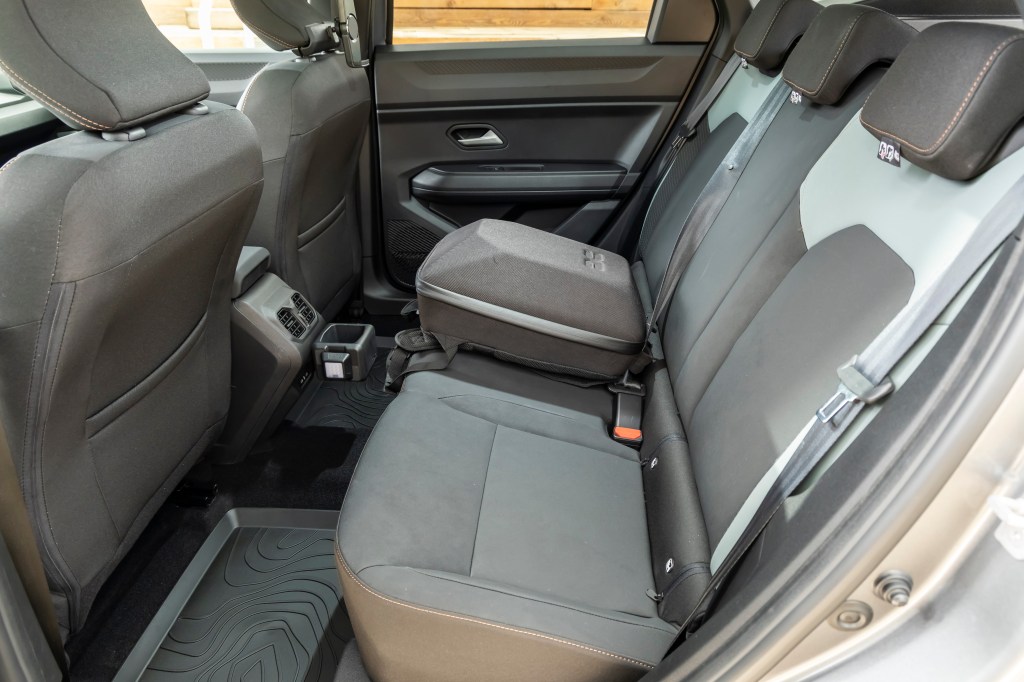
It’s also a design that majors on practicality, with class-leading rear legroom and a cavernous boot — its up-to-677 litres with the rear seats in place bests even the Skoda Kodiaq and Kia Sorento, which are technically in the size class above the Bigster. And it gets a 40:20:40 split rear bench, meaning you can fold down the middle backrest for extra practicality.
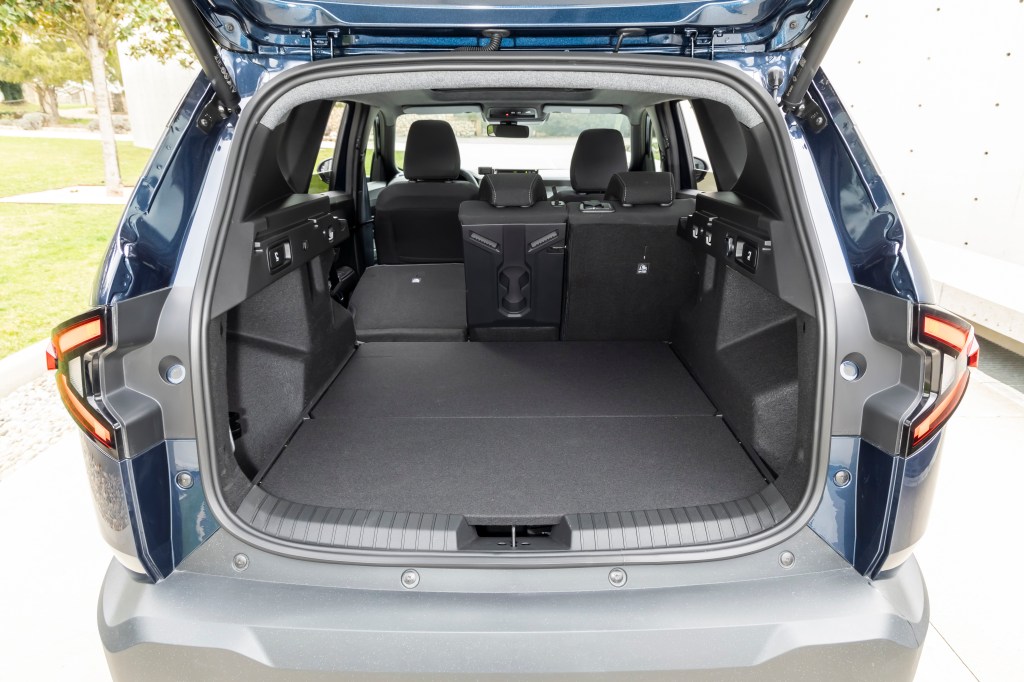
Up front there are many storage bins, though the cubbies are surprisingly tight for a car this size — in the doors and centre console. But Dacia seems to be gunning for Skoda’s reputation as the king of clever features; its YouClip system allows a growing number of accessories, such as phone holders, lights and hooks, to be mounted to five mounting points around the car. There’s also a phone/ tablet mount for the front seat headrests, and the rear central armrest features a pair of smartphone holders as well as two cupholders, meaning those in the back are well catered for.
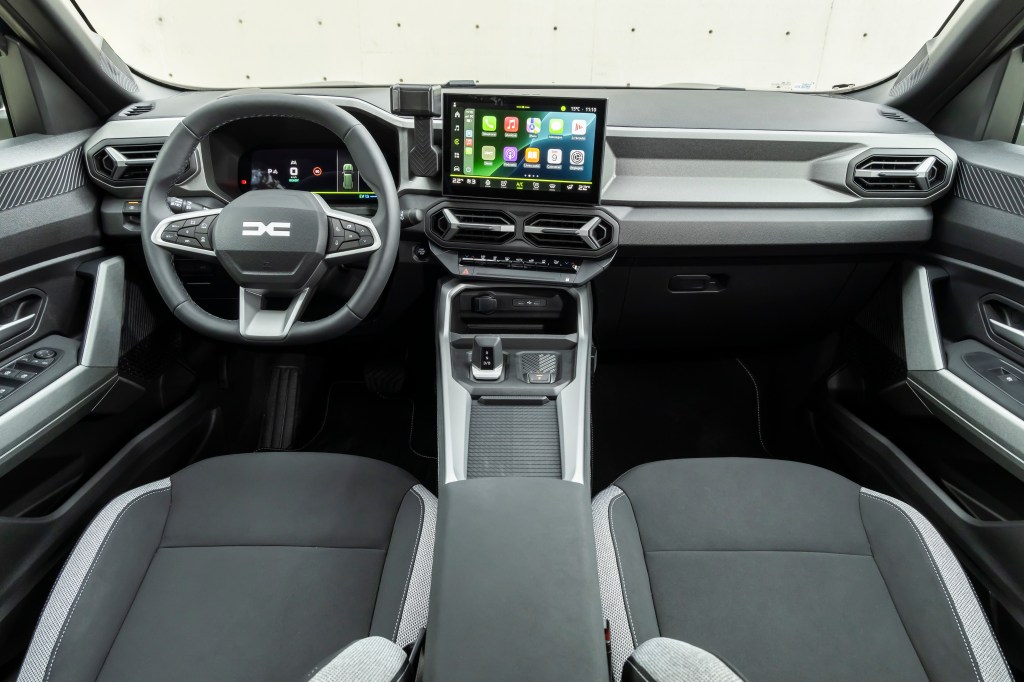
The cabin looks attractive and is solidly put together, too. But let’s be clear: the interior is not going to impress anyone who has traded in from a more upmarket brand and is used to soft-touch plastics and squidgy fabrics. Robust is the best way to describe it, especially in Extreme trim (pictured in red above), which also comes with plastic floor mats throughout (even in the boot) and sponge-down seat fabrics. Which is a pretty cool idea, even if it does feel like you’re sitting on a wetsuit.
Actually, the Extreme models are arguably the most visually arresting, with copper accents inside and outside, while the Journey model we tested was a little less interesting.
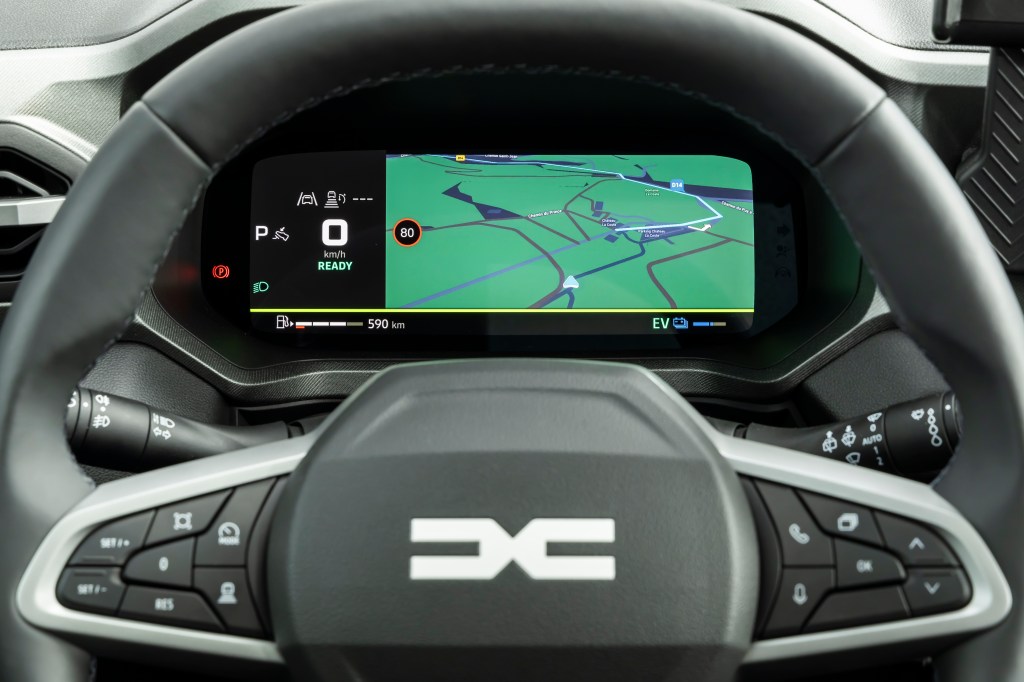
Where Dacia has noticeably improved things is in the infotainment. Two 10in screens provide everything you need to know, and the digital driver’s display is a real step up from the Duster, with clear, configurable graphics and even a setting that shows your navigation route — including when running maps from your phone (Android Auto and Apple Carplay are standard across the Bigster range).
And it all works … at least during our test drive. Anecdotally, and during one of our own long-term tests, Dacias haven’t been the most reliable when it comes to infotainment and connectivity, but with the Bigster’s new system it was quick and easy to set up my phone, and everything worked very smoothly each time I got in the car.

What’s more, Dacia isn’t skimping on physical buttons: the climate controls are toggle switches below the screen, the steering wheel has buttons for cruise control and display modes, and the stereo is controlled via the familiar Renault Group stalk behind the steering wheel (which I still would prefer moved to the steering wheel itself).
Even better, you can switch off lane keep assist and speed warnings (compulsory when you turn on your car these days) with the usual double tap of Renault Group’s My Safety Switch button on the dashboard. Le Vot was refreshingly honest about this at the launch, saying Dacia is absolutely committed to the highest levels of “passive safety” (which means crash structures, airbags and other things that protect you when you do have an accident), but isn’t “chasing active safety” (systems that attempt to take over and prevent the crash in the first place).
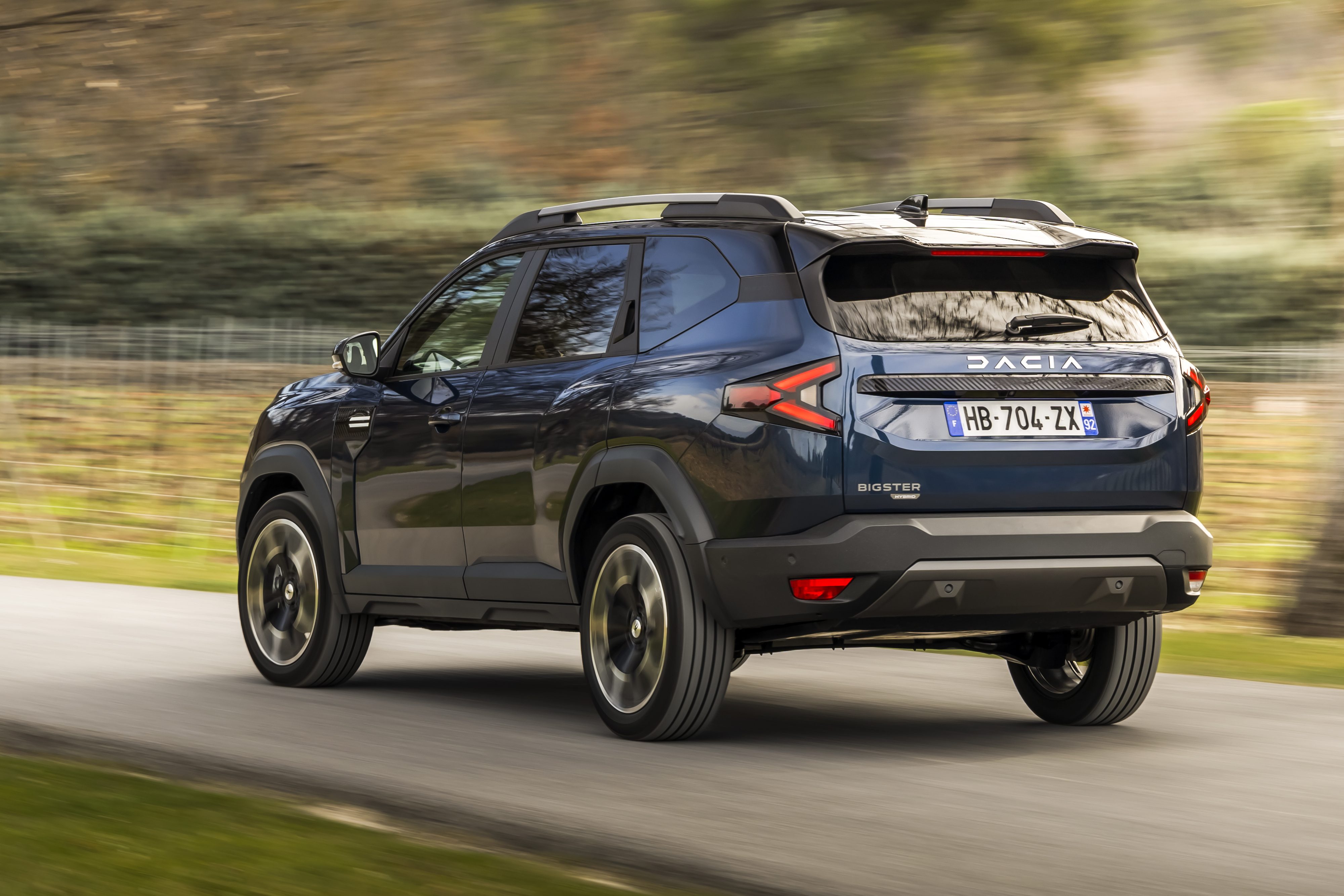
It’s a revealing comment because it proves that even car makers are fed up with the increasing requirements for nannying electronic systems. But if the Euro NCAP crash test score (when it comes) isn’t five stars, don’t be surprised — you need to play by the rules to get full marks.
Not that this is a car that encourages risk-taking; when it comes to performance, the Bigster isn’t going to blow anyone away. The car we drove was the Hybrid 155, which is a development of the full hybrid system from the Dacia Jogger that combines a four-cylinder petrol engine with an electric drive motor. The system produces a maximum of 153bhp and 127 lb ft of torque, which is good for 0-62mph in a leisurely 9.7sec. But actually the acceleration doesn’t feel as ponderous as that suggests, and overtakes can be made reasonably confidently.
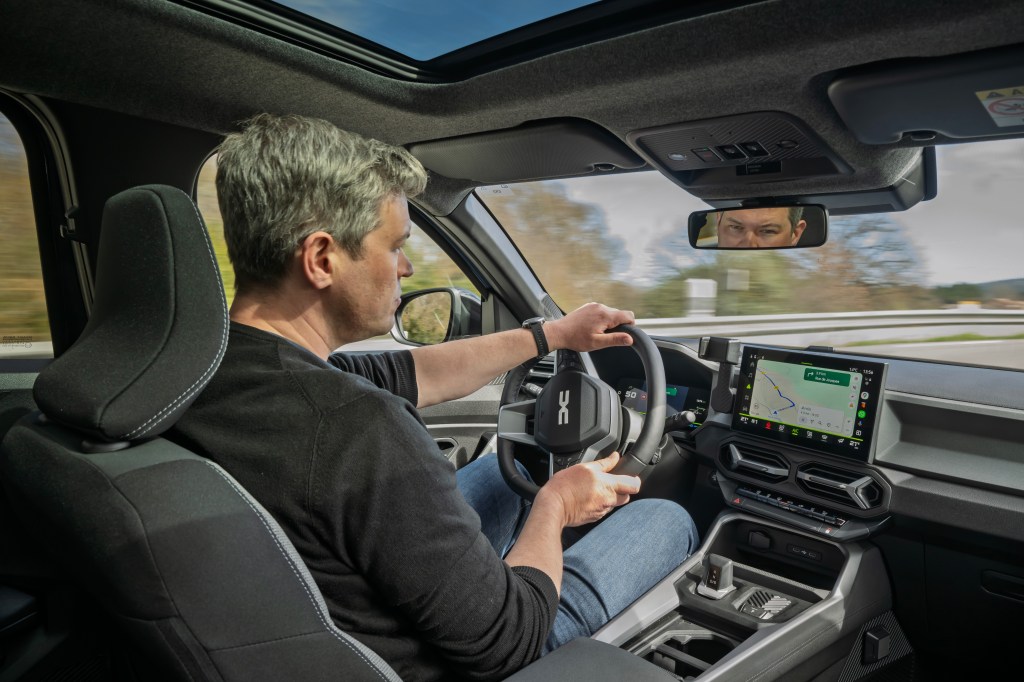
The less satisfactory thing, from the driver’s perspective, is the way power is delivered – coming on and off the throttle, particularly under load, isn’t as smooth as one might hope for. Perhaps because it’s quite complicated, marrying four gears for the petrol engine with two gears attached to the electric motor, for an official six gears but actually, 15 gear speeds are technically possible (all of which happens automatically, you’ll be pleased to read).
But that’s fine. This isn’t a sports car, after all, and it’s a lot less anodyne than some other hybrids with their continually variable transmissions, which whirr and whine away, with the sounds having no connection to what you’re doing with your right foot.
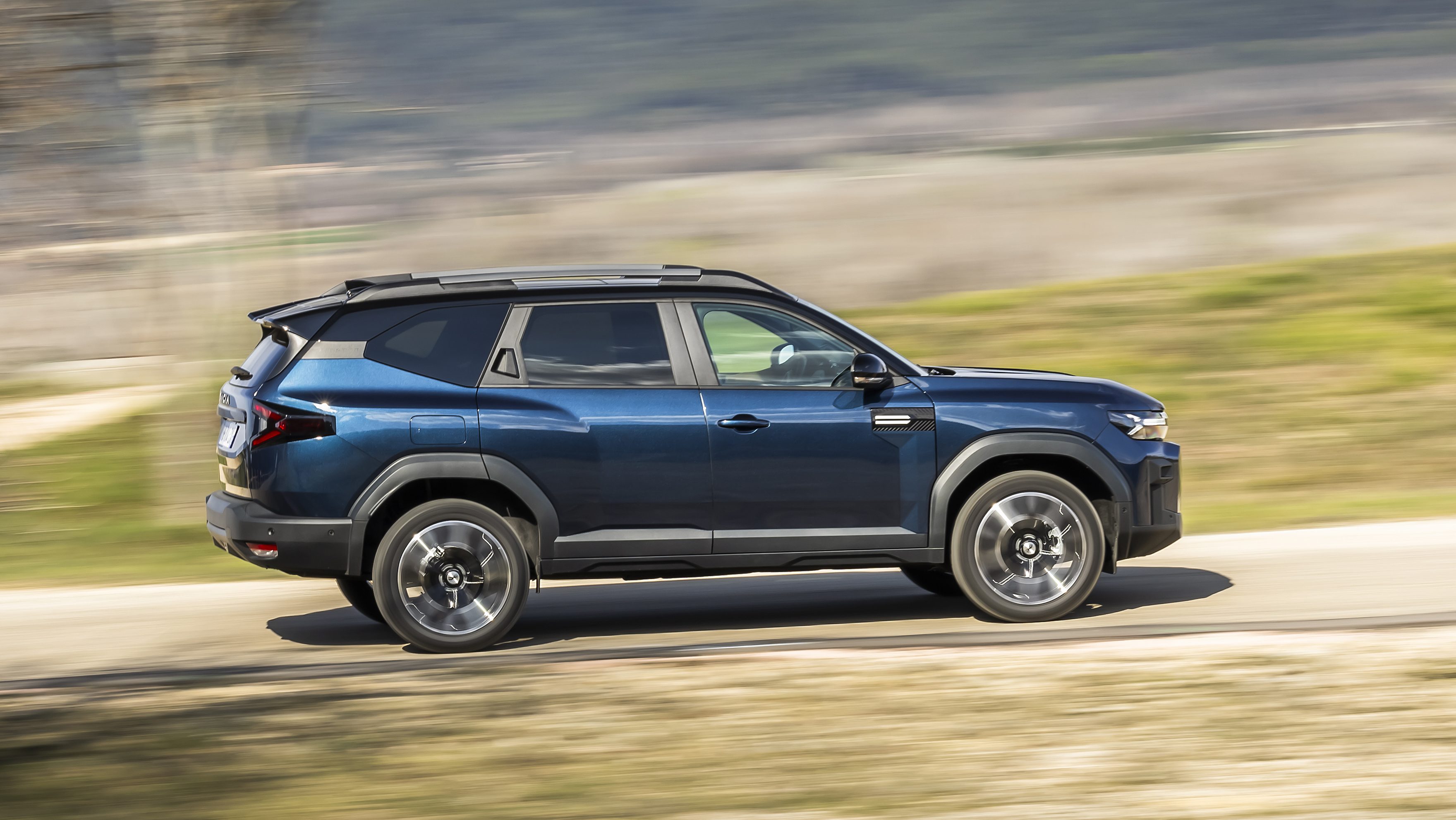
If you want a more traditional engine experience there’s also a 140hp mild hybrid, which has a small electric motor to assist the engine rather than help drive the wheels directly, and ups the towing capacity from one tonne to 1.5 tonnes. If you want four-wheel drive, you have to go for a 130hp mild hybrid.
On the plus side, the steering is light but accurate, and there’s a surprising absence of body roll, meaning the Dacia Bigster is rather pleasing to steer, as mid-to-large SUVs go. The compromise is on ride quality, which is rather firmer than one might expect.
All of which means the Bigster is an impressive entry into the affordable SUV segment — plusher, roomier and more high tech than a Duster, but retaining the brand’s trademarks of practicality, durability and value for money.
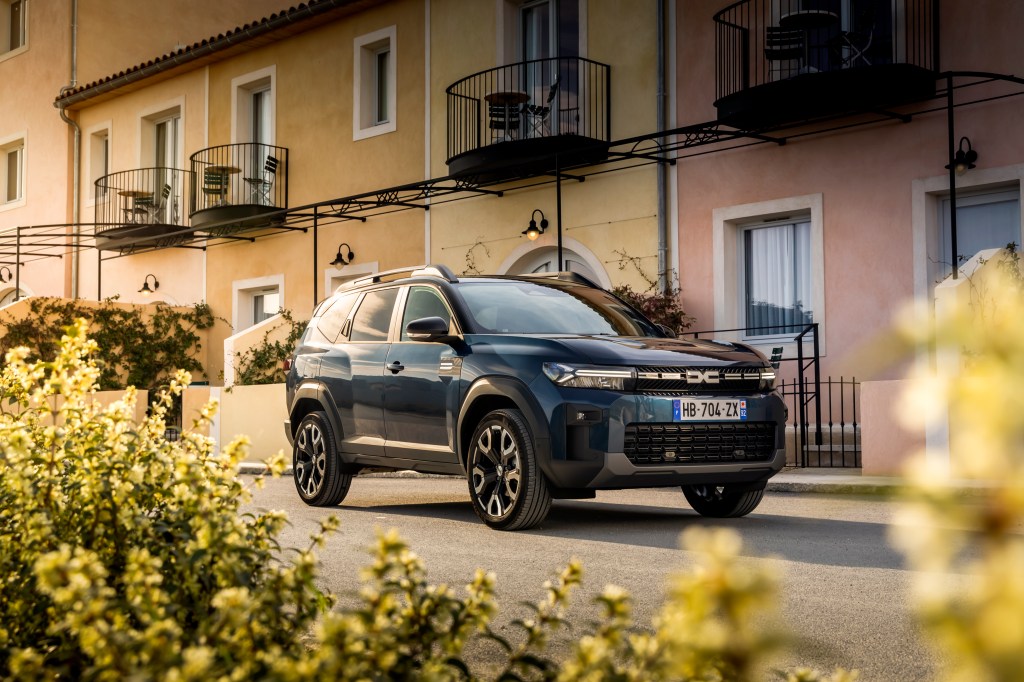
And even though it’s one of the most affordable family SUVs out there, owners won’t feel like they’re driving a bargain basement car because Dacia listened to customers and added just enough bells and whistles to keep buyers of this sort of vehicle happy.
No doubt the biggest smiles will come when owners pass similar cars on the road that cost 10, 20 or 30 thousand pounds more than they paid.
Related articles
- If you were interested in this review of the Dacia Bigster, you might like to check out our review of the MG ZS Hybrid+
- Also check out this review of the Renault Symbioz hybrid
- And don’t miss our 2024 Dacia Duster review: The rugged, affordable SUV modernised with electrification and quite the glow up
Latest articles
- Volkswagen Tayron 2025 review: Useful seven-seat SUV and decent PHEV — just not at the same time
- Skoda Enyaq 2025 review: Same book, different cover for electric SUV
- Lewis Hamilton wants to design a modern day Ferrari F40 with manual gearbox
- Dacia Bigster 2025 review: The ‘anti-premium’ family SUV that punches above its weight
- Your car’s worn tyres could be being burnt illegally in India, investigation reveals
- Open-top 214mph Aston Martin Vanquish Volante is world’s fastest blow-dry
- F1 2025 calendar and race reports: The new Formula One season as it happens
- Alfa Romeo Junior Ibrida 2025 review: Hybrid power adds an extra string to crossover’s bow
- Top 10 longest-range electric cars: all with over 400 miles per charge (officially)


